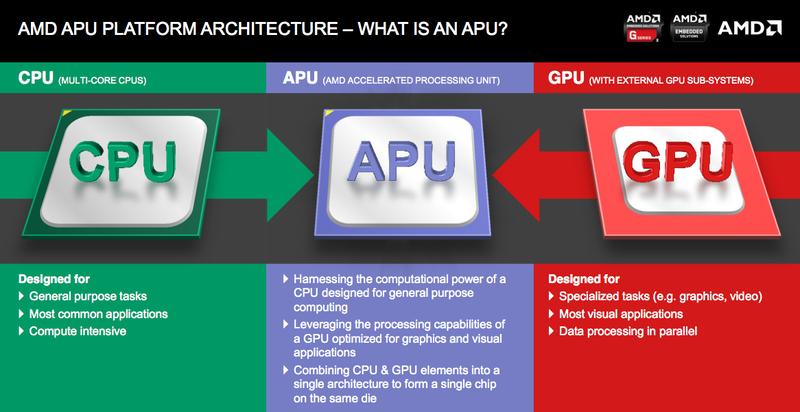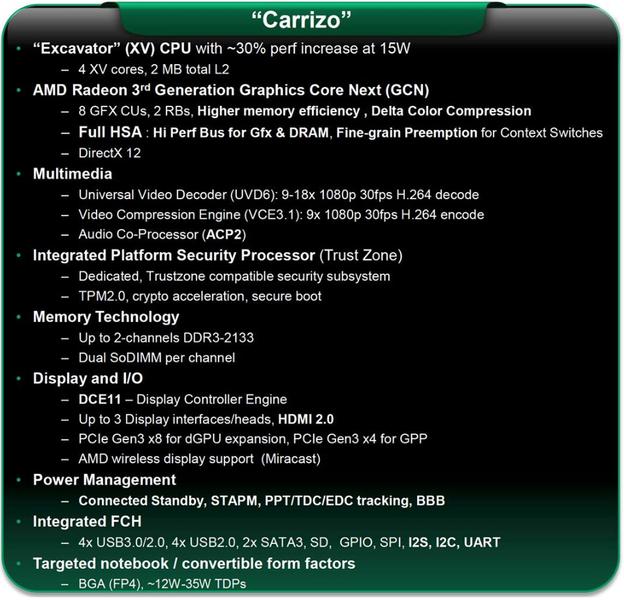AMD Carrizo Rumoured for December Launch
Bohs Hansen / 10 years ago

According to the latest leak coming from notebook manufacturers, the new AMD Carrizo APU will make its début as early as December 2014. This however wont be the desktop version but rather the Carrizo-L APU. It is designed for the entry-level notebook segment and will replace the current Beema and Mullins APUs. The full version of Carrizo is said to be scheduled for March 2015.
The Carrizo-L will be set to compete against Intel’s entry-level Pentium and Celeron processors. The new APU is still built upon the 28nm process and has support for dual-channel DDR3-2133 memory. It isn’t really a surprise that AMD didn’t go for DDR4 here as this is a budget oriented processor and the current DDR4 prices would blow the balance. Like the predecessor, these new APUs will have four CPUs cores and eight GPU cores in one die.
The biggest highlight is probably that the new APUs will use the latest Excavator cores, these are the 4th generation of the Bulldozer. While we are promised a significant performance boost of 30% from these new cores at their 15W TDPs, most people aren’t too optimistic on the improvements. AMD have surprised us in the past, so I wouldn’t write if off just yet. At the same time experts speculate that the higher wattage CPUs won’t get as good a boost as these entry-level models. The third generation Graphic Core Next (GCN) should also give these tiny APUs a great boost in the graphics department.

The slide above is from earlier this year, but it has all the relevant information about the new architecture collected in one. A thing worth noticing is that the CPU side only has half the L2 cache the Kaveri had. If this is a Die-size issue or it simply wasn’t needed in these models is up to any ones best guess, but this is something that could hurt the performance in some scenarios.
With support for DirectX 12 and HDMI 2.0 these tiny things will be able to handle 4K monitors up to 120Hz. This could make them perfect as HTPC or for product demonstrations. We’ve already seen the Delta Core function mentioned in the slide on the Tonga R9 285 chips. This is a compression technique that has allowed AMD to increase the memory bandwidth by 40%, something that without a doubt will help the APUs who depend on shared DDR3 memory rather than having their own dedicated GDDR5.
It looks like AMD is getting ready for a full-scale launch on the mobile market with the news about Nolan and Amur just a couple of days ago. These two are aimed at 2-in-1 devices and the tablet market and now the Carrizo-L for the entry-level notebooks.
Thank you MyDrivers for providing us with these information



















